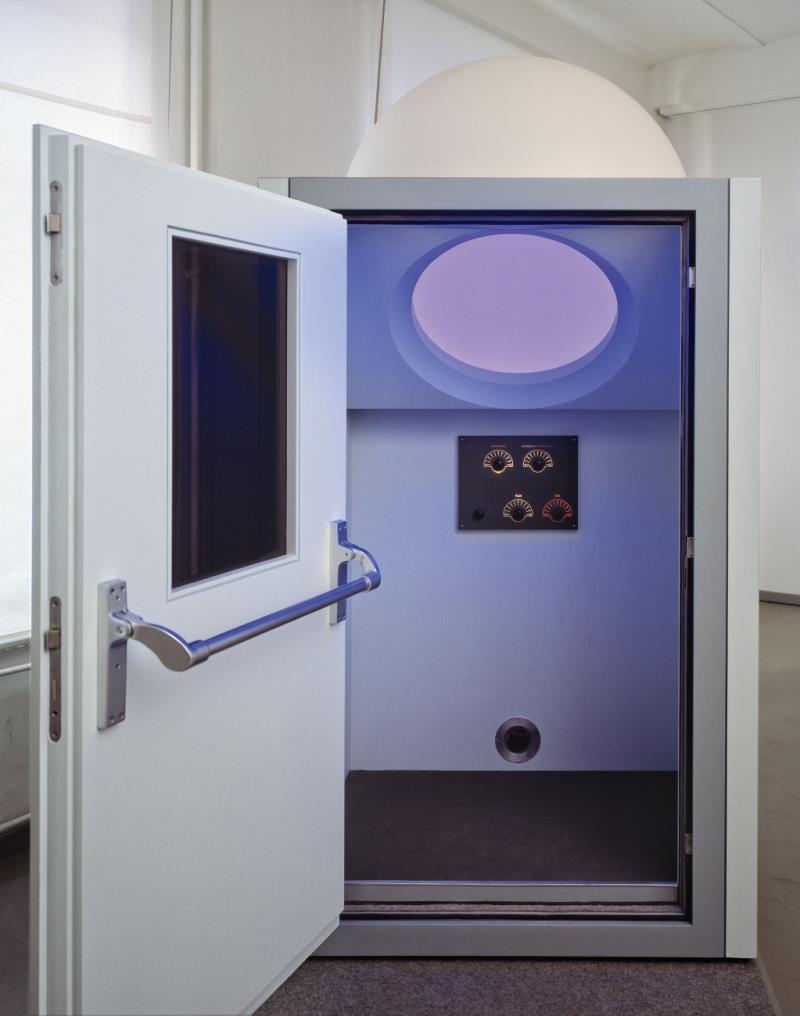1. "...five conceptual design proposals for postoptimal
electronic objects: Electroclimates, When Objects Dream . . . , Thief
of Affections, Tuneable Cities, and Faraday Chair."
2. "Each proposal is a material tale, a process of investigation. They are “valuefictions”:
they try to maintain a degree of technological realism while exploring
values different from those current."
3. Thief of Affection explores designing role models and psychosocial narratives. From “Electroclimates”
emerges ideas for genotypes, pseudo-interviews, and poetic products.
“When Objects Dream . . .” offers alternative conceptions of the smart object as
dreamy object, and new tools like the gaussmeter for mapping hertzian space.
“Tuneable Cities” explores overlapping electromagnetic and urban spaces using
a car and scanner to experience a city.
4. Electroclimates: Abstract Radio
This proposal developed from my desire to create a post-optimal object that
answered aesthetic needs within a context of everyday life. It would be an aid
for poetically inhabiting the electrosphere, a contemplative object revealing the
hertzian nature of our environment.
5. On another level, Electroclimates is a response to the communications that invade
domestic spaces.
6. Screens are like “supermatter”: once switched on, all attention turns to them,
and their material qualities are demoted to the status of package or container as
the viewer searches for the real content, information.
7. Electroclimates became a “pillow.”
Electroclimates responds to local changes in the radio frequency environment
by switching itself on when it detects signals stronger than the general
background.
8. ... also provided an opportunity to test public receptivity to the idea of electronic
products for answering poetic needs.
9. But here the aim was not to convince an
audience of a need, but to draw them into a “what if . . .” scenario, a “valuefiction”
to stimulate a desire for change.
10. In some ways, Electroclimates “fails”: it is too seductive to be a “critical design”
in that the values it embodies are not strange enough.
11. I explored more design ideas: adhesive nipples that vibrated when they
sensed fields, warning the wearer to move back, seat backs with vibrating nodules
that indicated radiation was passing through the sitter, and parasitical
lights that only worked if positioned in fields emitted by domestic products.
12. This proposal is based on the realization, discussed in chapter 4, that electronic
products are “role models” and that when we use them we become the generic
user they are modeled on.
Thief of Affections started with my desire to design an object that embodied
an alternative model of a user, a “perverse” role model. This project is grounded
in perversity: not sexual perversion but the desire to rebel, to deny the system
the satisfaction of total conformism.
13. The project began to follow two lines of investigation: a technological investigation
of the “caress” and how “affection” could be stolen, and an exploration
of the physical nature of the “walkman.”
14. emphasizing the psychosocial narrative
possibilities of an electronic object as a role model (figures 7.11–7.12).
The strangeness of the behavioral model embodied in this proposal draws attention
to the fact that all electronic products embody models about behaviour
and it questions just how distinct our own identity is from those embodied in
the electronic objects we use.
15. Tuneable Cities investigates overlapping electromagnetic, urban (and natural)
environments. It uses the car as a found environment/object, the product designer’s
entry point into urbanism. With its built-in radio, telephone, navigator,
and even television, the car is already an interface between hertzian and
physical space.
16. My proposed object for presenting a non-electronic, radio-free volume would
use a faraday cage to show the ubiquitous nature of radio space and make perceptible
the absence of radio.
17. Their apparent unusability creates a heightened
sense of “distance.”
... Driven by poetry, imagination, and intuition rather than reason
and logic, they have their own sense, an alternative to our everyday scientificindustrial
one.
